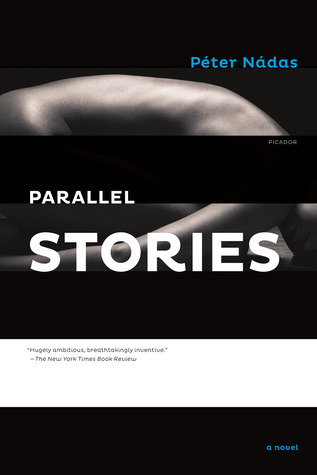
Parallel Stories: A Novel
Book Description
Lives intertwine across time and history in a tapestry woven with desire, conflict, and the haunting specter of memory. As love blooms and falls apart against the backdrop of sweeping landscapes and fierce political upheaval, each character grapples with their own demons, caught between past and present. Secrets linger like shadows, threatening to unravel the fragile connections that bind them. In this gripping exploration of the human condition, desire clashes with duty, and the choices made echo through the lives of many. What sacrifices are we willing to make for love, and what truths lie just beyond our grasp?
Quick Book Summary
"Parallel Stories" by Péter Nádas is a sweeping, intricate novel that spans decades of Hungarian and European history, threading together the destinies of several families whose lives collide amidst societal upheaval. The narrative shifts fluidly between past and present, blending the intimate lives of its characters with the broader political landscape of 20th-century Hungary, especially under the shadow of fascism and communism. Desire, love, and loss shape the characters’ journeys, while secrets and unresolved traumas ripple through generations. Nádas probes the complexities of identity, memory, and sexuality, challenging readers to consider how personal histories intertwine with collective fate. In this profound meditation on connection, time, and the burdens of history, Nádas reveals how each life echoes within another, while the elusiveness of truth and understanding lingers at the story’s core.
Summary of Key Ideas
Table of Contents
Intertwining of Personal and Political Histories
At the heart of "Parallel Stories" lies the convergence of individual lives across disparate backgrounds and epochs. The novel’s plot weaves together three families, Hungarian, German, and Jewish, forging links through friendships, sexual relationships, and accidental meetings. Through these intertwined paths, Nádas highlights how even the smallest interaction can ripple through generations, and how shared histories both haunt and shape the present.
The Weight and Persistence of Memory
Nádas’s characters are shaped and often burdened by memory. The narrative frequently drifts between past and present, illustrating how history lingers in family secrets, in unspoken traumas, and in the subtle influences of upbringing. These persistent memories become almost characters themselves, exerting silent pressure on the protagonists, who strive to disentangle their own desires from inherited fears and regrets. The difficulty of confronting or escaping the past is a constant tension throughout the book.
Desire, Love, and Human Connection
Desire is a central force in "Parallel Stories." Relationships bloom, wither, and mutate amidst the constraints of history and social convention. The characters’ loves and lusts are not isolated from political realities; instead, desire becomes deeply entangled with duty, loyalty, and survival. The exploration of sexuality—often depicted with raw, unflinching honesty—becomes a lens through which Nádas examines issues of power, vulnerability, and the longing for connection against the backdrop of political and historical turbulence.
Secrets, Trauma, and the Shadow of the Past
Secrets and traumas lurk under the surface, silently dictating characters’ choices and destinies. The legacy of war, collective trauma, and personal betrayals seeps into everyday life, often threatening the delicate ties that bind individuals and families. Nádas crafts a mosaic of experiences, showing how silence and suppression can do as much harm as open conflict. The lingering shadow of the past manifests in both personal and political spheres, coloring the characters’ perceptions and relationships.
Identity and the Search for Meaning
Finally, the novel asks profound questions about identity and meaning. As characters reflect on their own histories, their relationships, and the impossibility of fully knowing oneself or another, Nádas invites readers to contemplate the elusive nature of truth. In presenting parallel lives in a fractured society, the novel suggests that understanding is always partial, shaped by memory, desire, and the tides of history. Each life, no matter how ordinary, resonates with meaning amidst the chaos of the twentieth century.
Download This Summary
Get a free PDF of this summary instantly — no email required.





